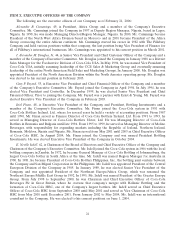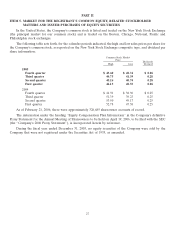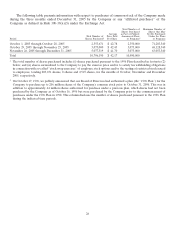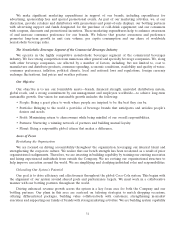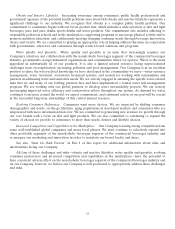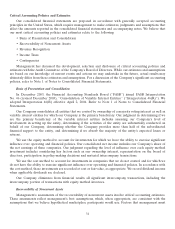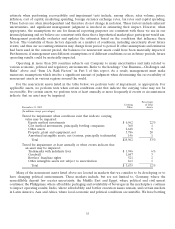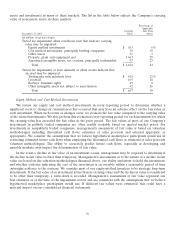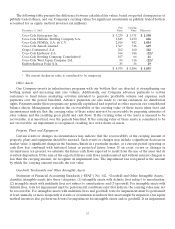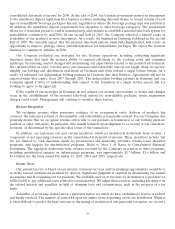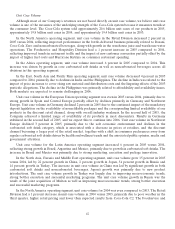Coca Cola 2005 Annual Report Download - page 36
Download and view the complete annual report
Please find page 36 of the 2005 Coca Cola annual report below. You can navigate through the pages in the report by either clicking on the pages listed below, or by using the keyword search tool below to find specific information within the annual report.Critical Accounting Policies and Estimates
Our consolidated financial statements are prepared in accordance with generally accepted accounting
principles in the United States, which require management to make estimates, judgments and assumptions that
affect the amounts reported in the consolidated financial statements and accompanying notes. We believe that
our most critical accounting policies and estimates relate to the following:
• Basis of Presentation and Consolidation
• Recoverability of Noncurrent Assets
• Revenue Recognition
• Income Taxes
• Contingencies
Management has discussed the development, selection and disclosure of critical accounting policies and
estimates with the Audit Committee of the Company’s Board of Directors. While our estimates and assumptions
are based on our knowledge of current events and actions we may undertake in the future, actual results may
ultimately differ from these estimates and assumptions. For a discussion of the Company’s significant accounting
policies, refer to Note 1 of Notes to Consolidated Financial Statements.
Basis of Presentation and Consolidation
In December 2003, the Financial Accounting Standards Board (‘‘FASB’’) issued FASB Interpretation
No. 46 (revised December 2003), ‘‘Consolidation of Variable Interest Entities’’ (‘‘Interpretation 46(R)’’). We
adopted Interpretation 46(R) effective April 2, 2004. Refer to Note 1 of Notes to Consolidated Financial
Statements.
Our Company consolidates all entities that we control by ownership of a majority voting interest as well as
variable interest entities for which our Company is the primary beneficiary. Our judgment in determining if we
are the primary beneficiary of the variable interest entities includes assessing our Company’s level of
involvement in setting up the entity, determining if the activities of the entity are substantially conducted on
behalf of our Company, determining whether the Company provides more than half of the subordinated
financial support to the entity, and determining if we absorb the majority of the entity’s expected losses or
returns.
We use the equity method to account for investments for which we have the ability to exercise significant
influence over operating and financial policies. Our consolidated net income includes our Company’s share of
the net earnings of these companies. Our judgment regarding the level of influence over each equity method
investment includes considering key factors such as our ownership interest, representation on the board of
directors, participation in policy-making decisions and material intercompany transactions.
We use the cost method to account for investments in companies that we do not control and for which we
do not have the ability to exercise significant influence over operating and financial policies. In accordance with
the cost method, these investments are recorded at cost or fair value, as appropriate. We record dividend income
when applicable dividends are declared.
Our Company eliminates from financial results all significant intercompany transactions, including the
intercompany portion of transactions with equity method investees.
Recoverability of Noncurrent Assets
Management’s assessments of the recoverability of noncurrent assets involve critical accounting estimates.
These assessments reflect management’s best assumptions, which, when appropriate, are consistent with the
assumptions that we believe hypothetical marketplace participants would use. Factors that management must
34


